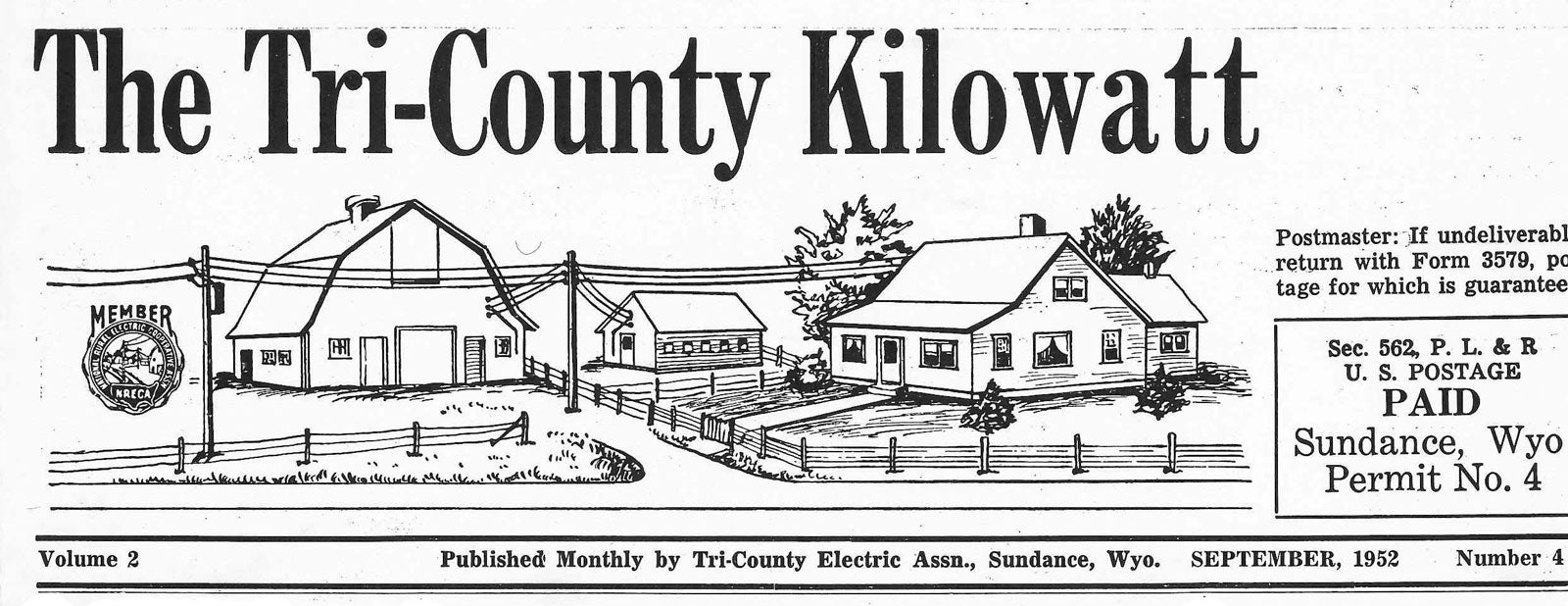
Our History
On January 1, 1997, two 50-year-olds tied the knot.
Sheridan-Johnson Rural Electric Association and Tri-County Electric Association merged to form Powder River Energy Corporation. Each partner in the merger had marked a half-century of delivering electrical power to farms, ranches, towns, and energy industries in their respective service territories.
But in the mid-1990’s, opportunities converged that made the merger an attractive and mutually beneficial venture for the cooperative members.
Discussions began in 1995 and resulted in various negotiations and studies that culminated in a membership vote in May 1996. Each cooperative approved the merger by more than a 50-percent margin. The merger became official on January 1, 1997, and PRECorp was born.
Before we look at the history of PRECorp, there are two parallel lives of Sheridan-Johnson REA and Tri-County that deserve mention. Sheridan-Johnson was the next-to-last rural electric cooperative established in Wyoming. Tri-County was the last.

Sheridan-Johnson REA (S-J REA)
The idea of bringing electricity to the rural areas of Johnson and Sheridan counties in Wyoming was launched in October 1944. Paperwork was filed and the new members paid $5 each to join. In June 1945, the first REA loan was secured to build 200 miles of power line to serve 356 consumers. Setting poles was still two years away as much more paperwork, filings, designs, and other procurements needed to be completed.
On July 25, 1947, a formal dedication ceremony was held east of the grain elevators north of Sheridan. This is where the first pole was set. Shortly thereafter S-J REA expanded to Kaycee, Clearmont, Arvada, and Sussex. Areas of Montana north of Sheridan were also acquired in 1948.
For the first decade, S-J REA struggled to achieve the power demand from its members. However, oil field developments in the Ash Creek area provided the needed loads to assist in the finances.
The cooperative continued to add larger substations, transmission, and distribution lines as the loads continued to increase in the energy industry. During the history of S-J REA, neighbors at Tri-County Electric were in regular discussions about ways to cooperate and maximize efficiencies.

Tri-County Electric Association (TCEA)
It took about 20 years for TCEA to become an overnight success. Farmers and ranchers discussed alternatives for years before they were able to come up with a plan to launch TCEA in June 1945. As was the case with many electric cooperatives in the Great Plains, distance was a big hurdle. The REA denied the initial loan application because there weren’t enough members signed up in Campbell, Crook, and Weston counties – about 1,000 members over 1,200 miles of line.
REA officials settled on a scaled-back plan to run a power line from the WYODAK power plant at Gillette to Moorcroft, Upton, and Sundance. TCEA planners had a multi-phase build-out plan in mind.
Although the towns of Moorcroft and Sundance agreed to join the cooperative, Upton declined under pressure from “public utilities.”
Despite early hurdles, TCEA began to grow in membership as local farms and ranches began plugging in to the convenience of electricity.
Industrial loads were modest compared to today. Bentonite plants and oil fields in Weston County were the primary users. Finances were tight and TCEA struggled to meet its obligations during its first decade.
However in the 1950s, new oil fields began to grow in the TCEA territory and line construction to these oil fields connected ranches and farms along the way. The cooperative was back on its feet financially.
Large oil companies were members of TCEA and the once-struggling cooperative was now one of the fastest-growing distribution coops in the nation.
But there was more. In the late 1960’s and early 1970’s, the world turned its eyes toward coal as a viable power generation fuel. The layer of coal in Campbell county was just waiting to be extracted. TCEA was perfectly positioned to sell power to the coal mines that were just turning the first shovels of dirt in Campbell County.
The coal boom not only brought industrial development, it also drew thousands of new residential customers to the rugged landscape.
With the sizeable power sales, TCEA became a cutting-edge cooperative adopting some of the most modern methods of outage management, record-keeping, and engineering.
TCEA’s forward-looking attitude brought it to the table with S-J REA and the merger deal was sealed within two years.
PRECorp
In the years since the 1997 merger, PRECorp has grown with the boom and bust cycles of Wyoming’s energy economy. In the mid-2000’s, PRECorp was hit with a rapidly moving coal-bed methane industry. Immediately PRECorp board members began implementing a process to protect the members of PRECorp from high infrastructure costs, while providing timely services for the CBM industry.
PRECorp has won national recognition for its leadership in measuring and tracking performance through the Balanced Scorecard process. PRECorp has also been a leader in its work to develop a comprehensive strategy map that ties its mission and vision to the core business of each employee.
